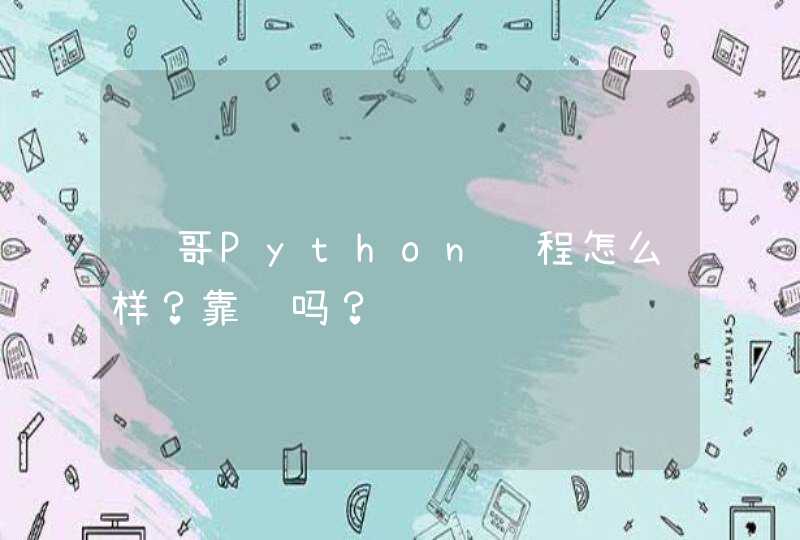
package test
import java.io.FileInputStream
import java.io.FileOutputStream
import java.io.IOException
import java.io.ObjectInputStream
import java.io.ObjectOutputStream
import java.security.*
import javax.crypto.Cipher
import javax.crypto.KeyGenerator
import javax.crypto.SecretKey
/**
* 加密解密
*
* @author shy.qiu
* @since http://blog.csdn.net/qiushyfm
*/
public class CryptTest {
/**
* 进行MD5加密
*
* @param info
*要加密的信息
* @return String 加密后的字符串
*/
public String encryptToMD5(String info) {
byte[] digesta = null
try {
// 得到一个md5的消息摘要
MessageDigest alga = MessageDigest.getInstance("MD5")
// 添加要进行计算摘要的信息
alga.update(info.getBytes())
// 得到该摘要
digesta = alga.digest()
} catch (NoSuchAlgorithmException e) {
e.printStackTrace()
}
// 将摘要转为字符串
String rs = byte2hex(digesta)
return rs
}
/**
* 进行SHA加密
*
* @param info
*要加密的信息
* @return String 加密后的字符串
*/
public String encryptToSHA(String info) {
byte[] digesta = null
try {
// 得到一个SHA-1的消息摘要
MessageDigest alga = MessageDigest.getInstance("SHA-1")
// 添加要进行计算摘要的信息
alga.update(info.getBytes())
// 得到该摘要
digesta = alga.digest()
} catch (NoSuchAlgorithmException e) {
e.printStackTrace()
}
// 将摘要转为字符串
String rs = byte2hex(digesta)
return rs
}
// //////////////////////////////////////////////////////////////////////////
/**
* 创建密匙
*
* @param algorithm
*加密算法,可用 DES,DESede,Blowfish
* @return SecretKey 秘密(对称)密钥
*/
public SecretKey createSecretKey(String algorithm) {
// 声明KeyGenerator对象
KeyGenerator keygen
// 声明 密钥对象
SecretKey deskey = null
try {
// 返回生成指定算法的秘密密钥的 KeyGenerator 对象
keygen = KeyGenerator.getInstance(algorithm)
// 生成一个密钥
deskey = keygen.generateKey()
} catch (NoSuchAlgorithmException e) {
e.printStackTrace()
}
// 返回密匙
return deskey
}
/**
* 根据密匙进行DES加密
*
* @param key
*密匙
* @param info
*要加密的信息
* @return String 加密后的信息
*/
public String encryptToDES(SecretKey key, String info) {
// 定义 加密算法,可用 DES,DESede,Blowfish
String Algorithm = "DES"
// 加密随机数生成器 (RNG),(可以不写)
SecureRandom sr = new SecureRandom()
// 定义要生成的密文
byte[] cipherByte = null
try {
// 得到加密/解密器
Cipher c1 = Cipher.getInstance(Algorithm)
// 用指定的密钥和模式初始化Cipher对象
// 参数:(ENCRYPT_MODE, DECRYPT_MODE, WRAP_MODE,UNWRAP_MODE)
c1.init(Cipher.ENCRYPT_MODE, key, sr)
// 对要加密的内容进行编码处理,
cipherByte = c1.doFinal(info.getBytes())
} catch (Exception e) {
e.printStackTrace()
}
// 返回密文的十六进制形式
return byte2hex(cipherByte)
}
/**
* 根据密匙进行DES解密
*
* @param key
*密匙
* @param sInfo
*要解密的密文
* @return String 返回解密后信息
*/
public String decryptByDES(SecretKey key, String sInfo) {
// 定义 加密算法,
String Algorithm = "DES"
// 加密随机数生成器 (RNG)
SecureRandom sr = new SecureRandom()
byte[] cipherByte = null
try {
// 得到加密/解密器
Cipher c1 = Cipher.getInstance(Algorithm)
// 用指定的密钥和模式初始化Cipher对象
c1.init(Cipher.DECRYPT_MODE, key, sr)
// 对要解密的内容进行编码处理
cipherByte = c1.doFinal(hex2byte(sInfo))
} catch (Exception e) {
e.printStackTrace()
}
// return byte2hex(cipherByte)
return new String(cipherByte)
}
// /////////////////////////////////////////////////////////////////////////////
/**
* 创建密匙组,并将公匙,私匙放入到指定文件中
*
* 默认放入mykeys.bat文件中
*/
public void createPairKey() {
try {
// 根据特定的算法一个密钥对生成器
KeyPairGenerator keygen = KeyPairGenerator.getInstance("DSA")
// 加密随机数生成器 (RNG)
SecureRandom random = new SecureRandom()
// 重新设置此随机对象的种子
random.setSeed(1000)
// 使用给定的随机源(和默认的参数集合)初始化确定密钥大小的密钥对生成器
keygen.initialize(512, random)// keygen.initialize(512)
// 生成密钥组
KeyPair keys = keygen.generateKeyPair()
// 得到公匙
PublicKey pubkey = keys.getPublic()
// 得到私匙
PrivateKey prikey = keys.getPrivate()
// 将公匙私匙写入到文件当中
doObjToFile("mykeys.bat", new Object[] { prikey, pubkey })
} catch (NoSuchAlgorithmException e) {
e.printStackTrace()
}
}
/**
* 利用私匙对信息进行签名 把签名后的信息放入到指定的文件中
*
* @param info
*要签名的信息
* @param signfile
*存入的文件
*/
public void signToInfo(String info, String signfile) {
// 从文件当中读取私匙
PrivateKey myprikey = (PrivateKey) getObjFromFile("mykeys.bat", 1)
// 从文件中读取公匙
PublicKey mypubkey = (PublicKey) getObjFromFile("mykeys.bat", 2)
try {
// Signature 对象可用来生成和验证数字签名
Signature signet = Signature.getInstance("DSA")
// 初始化签署签名的私钥
signet.initSign(myprikey)
// 更新要由字节签名或验证的数据
signet.update(info.getBytes())
// 签署或验证所有更新字节的签名,返回签名
byte[] signed = signet.sign()
// 将数字签名,公匙,信息放入文件中
doObjToFile(signfile, new Object[] { signed, mypubkey, info })
} catch (Exception e) {
e.printStackTrace()
}
}
/**
* 读取数字签名文件 根据公匙,签名,信息验证信息的合法性
*
* @return true 验证成功 false 验证失败
*/
public boolean validateSign(String signfile) {
// 读取公匙
PublicKey mypubkey = (PublicKey) getObjFromFile(signfile, 2)
// 读取签名
byte[] signed = (byte[]) getObjFromFile(signfile, 1)
// 读取信息
String info = (String) getObjFromFile(signfile, 3)
try {
// 初始一个Signature对象,并用公钥和签名进行验证
Signature signetcheck = Signature.getInstance("DSA")
// 初始化验证签名的公钥
signetcheck.initVerify(mypubkey)
// 使用指定的 byte 数组更新要签名或验证的数据
signetcheck.update(info.getBytes())
System.out.println(info)
// 验证传入的签名
return signetcheck.verify(signed)
} catch (Exception e) {
e.printStackTrace()
return false
}
}
/**
* 将二进制转化为16进制字符串
*
* @param b
*二进制字节数组
* @return String
*/
public String byte2hex(byte[] b) {
String hs = ""
String stmp = ""
for (int n = 0n <b.lengthn++) {
stmp = (java.lang.Integer.toHexString(b[n] &0XFF))
if (stmp.length() == 1) {
hs = hs + "0" + stmp
} else {
hs = hs + stmp
}
}
return hs.toUpperCase()
}
/**
* 十六进制字符串转化为2进制
*
* @param hex
* @return
*/
public byte[] hex2byte(String hex) {
byte[] ret = new byte[8]
byte[] tmp = hex.getBytes()
for (int i = 0i <8i++) {
ret[i] = uniteBytes(tmp[i * 2], tmp[i * 2 + 1])
}
return ret
}
/**
* 将两个ASCII字符合成一个字节; 如:"EF"-->0xEF
*
* @param src0
*byte
* @param src1
*byte
* @return byte
*/
public static byte uniteBytes(byte src0, byte src1) {
byte _b0 = Byte.decode("0x" + new String(new byte[] { src0 }))
.byteValue()
_b0 = (byte) (_b0 <<4)
byte _b1 = Byte.decode("0x" + new String(new byte[] { src1 }))
.byteValue()
byte ret = (byte) (_b0 ^ _b1)
return ret
}
/**
* 将指定的对象写入指定的文件
*
* @param file
*指定写入的文件
* @param objs
*要写入的对象
*/
public void doObjToFile(String file, Object[] objs) {
ObjectOutputStream oos = null
try {
FileOutputStream fos = new FileOutputStream(file)
oos = new ObjectOutputStream(fos)
for (int i = 0i <objs.lengthi++) {
oos.writeObject(objs[i])
}
} catch (Exception e) {
e.printStackTrace()
} finally {
try {
oos.close()
} catch (IOException e) {
e.printStackTrace()
}
}
}
/**
* 返回在文件中指定位置的对象
*
* @param file
*指定的文件
* @param i
*从1开始
* @return
*/
public Object getObjFromFile(String file, int i) {
ObjectInputStream ois = null
Object obj = null
try {
FileInputStream fis = new FileInputStream(file)
ois = new ObjectInputStream(fis)
for (int j = 0j <ij++) {
obj = ois.readObject()
}
} catch (Exception e) {
e.printStackTrace()
} finally {
try {
ois.close()
} catch (IOException e) {
e.printStackTrace()
}
}
return obj
}
/**
* 测试
*
* @param args
*/
public static void main(String[] args) {
CryptTest jiami = new CryptTest()
// 执行MD5加密"Hello world!"
System.out.println("Hello经过MD5:" + jiami.encryptToMD5("Hello"))
// 生成一个DES算法的密匙
SecretKey key = jiami.createSecretKey("DES")
// 用密匙加密信息"Hello world!"
String str1 = jiami.encryptToDES(key, "Hello")
System.out.println("使用des加密信息Hello为:" + str1)
// 使用这个密匙解密
String str2 = jiami.decryptByDES(key, str1)
System.out.println("解密后为:" + str2)
// 创建公匙和私匙
jiami.createPairKey()
// 对Hello world!使用私匙进行签名
jiami.signToInfo("Hello", "mysign.bat")
// 利用公匙对签名进行验证。
if (jiami.validateSign("mysign.bat")) {
System.out.println("Success!")
} else {
System.out.println("Fail!")
}
}
}
这个算法java SDK自带的额 参考代码如下:
/**解密
* @param content 待解密内容
* @param password 解密密钥
* @return
*/
public static byte[] decrypt(byte[] content, String password) {
try {
KeyGenerator kgen = KeyGenerator.getInstance("AES")
kgen.init(128, new SecureRandom(password.getBytes()))
SecretKey secretKey = kgen.generateKey()
byte[] enCodeFormat = secretKey.getEncoded()
SecretKeySpec key = new SecretKeySpec(enCodeFormat, "AES")
Cipher cipher = Cipher.getInstance("AES")// 创建密码器
cipher.init(Cipher.DECRYPT_MODE, key)// 初始化
byte[] result = cipher.doFinal(content)
return result // 加密
} catch (NoSuchAlgorithmException e) {
e.printStackTrace()
} catch (NoSuchPaddingException e) {
e.printStackTrace()
} catch (InvalidKeyException e) {
e.printStackTrace()
} catch (IllegalBlockSizeException e) {
e.printStackTrace()
} catch (BadPaddingException e) {
e.printStackTrace()
}
return null
}
/**
* 加密
*
* @param content 需要加密的内容
* @param password 加密密码
* @return
*/
public static byte[] encrypt(String content, String password) {
try {
KeyGenerator kgen = KeyGenerator.getInstance("AES")
kgen.init(128, new SecureRandom(password.getBytes()))
SecretKey secretKey = kgen.generateKey()
byte[] enCodeFormat = secretKey.getEncoded()
SecretKeySpec key = new SecretKeySpec(enCodeFormat, "AES")
Cipher cipher = Cipher.getInstance("AES")// 创建密码器
byte[] byteContent = content.getBytes("utf-8")
cipher.init(Cipher.ENCRYPT_MODE, key)// 初始化
byte[] result = cipher.doFinal(byteContent)
return result // 加密
} catch (NoSuchAlgorithmException e) {
e.printStackTrace()
} catch (NoSuchPaddingException e) {
e.printStackTrace()
} catch (InvalidKeyException e) {
e.printStackTrace()
} catch (UnsupportedEncodingException e) {
e.printStackTrace()
} catch (IllegalBlockSizeException e) {
e.printStackTrace()
} catch (BadPaddingException e) {
e.printStackTrace()
}
return null
}
http://blog.csdn.net/hbcui1984/article/details/5201247图像界面的话就不说了





































































